Blog
Potential Foot Injuries From Playing Pickelball

Pickleball, a sport combining elements of tennis, badminton, and table tennis, has surged in popularity, drawing players of all ages to its fast-paced and engaging court. As enthusiasts partake in this low-impact but high-energy activity, it is essential to be mindful of potential foot injuries associated with the sport. The dynamic lateral movements, abrupt stops, and quick pivots integral to pickleball can put strain on the feet, making players susceptible to injuries. Common foot issues may include ankle sprains due to sudden changes in direction, plantar fasciitis from repetitive jumping and running, and stress fractures resulting from the intense impact on the feet. Understanding the sport's demands and the potential injuries it can cause enables players to adopt preventive measures, such as wearing proper footwear, engaging in stretching routines, and getting adequate rest. If you have endured a foot injury from playing pickleball, it is suggested that you visit a podiatrist who can treat it accordingly.
Ankle and foot injuries are common among athletes and in many sports. They can be caused by several problems and may be potentially serious. If you are feeling pain or think you were injured in a sporting event or when exercising, consult with Shaun J. Limon, DPM and Lisa Griffith-Limon, DPM from Limons Foot & Ankle Care. Our doctors will assess your condition and provide you with quality foot and ankle treatment.
Common Injuries
The most common injuries that occur in sporting activities include:
- Achilles Tendonitis
- Achilles Tendon Rupture
- Ankle Sprains
- Broken Foot
- Plantar Fasciitis
- Stress Fractures
- Turf Toe
Symptoms
Symptoms vary depending upon the injury and in some cases, there may be no symptoms at all. However, in most cases, some form of symptom is experienced. Pain, aching, burning, bruising, tenderness, tightness or stiffness, sensation loss, difficulty moving, and swelling are the most common symptoms.
Treatment
Just as symptoms vary depending upon the injury, so do treatment options. A common treatment method is known as the RICE method. This method involves rest, applying ice, compression and elevating the afflicted foot or ankle. If the injury appears to be more serious, surgery might be required, such as arthroscopic or reconstructive surgery. Lastly, rehabilitation or therapy might be needed to gain full functionality in the afflicted area. Any discomfort experienced by an athlete must be evaluated by a licensed, reputable medical professional.
If you have any questions, please feel free to contact our office located in Lakewood Ranch, FL . We offer the newest diagnostic and treatment technologies for all your foot care needs.
Work-Related Foot Injuries
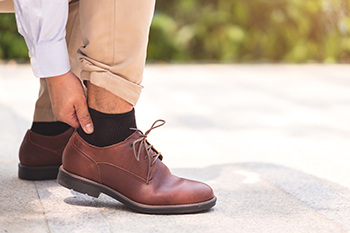
Work-related foot injuries can be broadly categorized into two groups. The first group encompasses injuries caused by punctures, crushing, sprains, and cuts. The second group consists of injuries resulting from slips, trips, and falls. While slips and falls may not always lead to foot injuries, neglecting foot safety significantly contributes to these accidents. These two categories do not cover all workplace foot issues. Workers also frequently experience conditions such as calluses, ingrown toenails, or general foot fatigue. While these may not be classified as occupational injuries, they can have serious implications for health and safety on the job. These issues cause discomfort, pain, and fatigue, making workers more susceptible to muscle and joint injuries. Furthermore, tired workers who are also in pain are less attentive and more prone to unsafe actions, increasing the likelihood of accidents in the workplace. If you have sustained a work-related foot injury, or are concerned about this problem, it is suggested that you schedule an appointment with a podiatrist who can address any issues you may have.
While working on the feet, it is important to take the proper care of them. For more information about working on your feet, contact Shaun J. Limon, DPM and Lisa Griffith-Limon, DPM from Limons Foot & Ankle Care. Our doctors will treat your foot and ankle needs.
Working on Your Feet
Standing on your feet for long periods of time can cause stress and pain in your feet. Your whole body may experience change in terms of posture, back pain, bunions, callouses and or plantar warts. There are ways to avoid these conditions with proper foot care, smart choices and correct posture.
Positive Changes
Negative heeled shoe – Choosing this shoe type places the heel slightly lower than the ball of the foot. These are great for overall foot health. Find shoes that fit you correctly.
Go barefoot – Our feet were not designed to be enclosed for all hours of the day. Try to periodically expose your feet to air.
Eliminate Pain
Foot Exercises – Performing simple exercises, incorporating yoga and doing stretches are beneficial. This will allow increased blood flow to the area and muscles of the foot.
Achilles tendon – Stretching the foot out flat on the floor will relax the calf muscles and tendon. These exercises can be performed almost anywhere. Make sure you add these exercises to your daily regimen.
With a little bit of this information and knowing more about foot health, you will notice changes. Foot stretches and proper footwear will help with pain and prevent further issues.
If you have any questions please feel free to contact our office located in Lakewood Ranch, FL . We offer the newest diagnostic and treatment technologies for all your foot and ankle needs.
Do Your Child's Feet Hurt?
How Bones and Muscles in the Feet Work Together

The human foot is a marvel of intricate design. A symphony of bones, joints, muscles, and ligaments work in harmony to facilitate movement and provide essential support. Comprising 26 bones, the foot's structural integrity is maintained by an elaborate network of joints that allow for flexibility and articulation. Muscles, spanning from the calf to the toes, create the dynamic movements needed for activities like walking, running, and jumping. Ligaments, sturdy bands of connective tissue, secure bones together, forming stable joints while allowing controlled movement. From the heel to the toes, each component plays a critical role in weight distribution, balance, and shock absorption. The arches, formed by the alignment of bones, contribute to the foot's natural shock-absorbing properties. Understanding this intricate interplay of bones, joints, muscles, and ligaments is essential for appreciating the resilience and versatility of our feet, which serve as the foundation of our daily mobility and physical well-being. If you are having problems with any part of your feet and ankles, it is suggested that you visit a podiatrist who can offer treatment solutions.
If you have any concerns about your feet, contact Shaun J. Limon, DPM and Lisa Griffith-Limon, DPM from Limons Foot & Ankle Care. Our doctors can provide the care you need to keep you pain-free and on your feet.
Biomechanics in Podiatry
Podiatric biomechanics is a particular sector of specialty podiatry with licensed practitioners who are trained to diagnose and treat conditions affecting the foot, ankle and lower leg. Biomechanics deals with the forces that act against the body, causing an interference with the biological structures. It focuses on the movement of the ankle, the foot and the forces that interact with them.
A History of Biomechanics
- Biomechanics dates back to the BC era in Egypt where evidence of professional foot care has been recorded.
- In 1974, biomechanics gained a higher profile from the studies of Merton Root, who claimed that by changing or controlling the forces between the ankle and the foot, corrections or conditions could be implemented to gain strength and coordination in the area.
Modern technological improvements are based on past theories and therapeutic processes that provide a better understanding of podiatric concepts for biomechanics. Computers can provide accurate information about the forces and patterns of the feet and lower legs.
Understanding biomechanics of the feet can help improve and eliminate pain, stopping further stress to the foot.
If you have any questions please feel free to contact our office located in Lakewood Ranch, FL . We offer the newest diagnostic and treatment technologies for all your foot and ankle needs.
Defining Foot Blisters and Their Origins

Foot blisters are defined as fluid-filled sacs that form on the skin, and are often encountered during daily activities or as a result of wearing ill-fitting footwear. They develop as a result of friction or repeated rubbing, which separates the layers of skin, creating a pocket of clear fluid. Several factors can contribute to the formation of foot blisters. Tight or improperly fitting shoes can lead to excessive rubbing, especially while walking or running. Moisture, such as sweat or wet conditions, softens the skin and makes it more prone to blistering. Certain materials consisting of rough socks or shoes, can exacerbate the problem. Additionally, activities that place excessive stress on the feet, like hiking or long-distance running, are common culprits. Understanding the definition and causes of foot blisters can help you take preventive measures. If you have blisters on your feet, it is suggested that you contact a podiatrist who can safely treat them and guide you on blister-prevention tactics.
Blisters may appear as a single bubble or in a cluster. They can cause a lot of pain and may be filled with pus, blood, or watery serum. If your feet are hurting, contact Shaun J. Limon, DPM and Lisa Griffith-Limon, DPM of Limons Foot & Ankle Care. Our doctors can provide the care you need to keep you pain-free and on your feet.
Foot Blisters
Foot blisters are often the result of friction. This happens due to the constant rubbing from shoes, which can lead to pain.
What Are Foot Blisters?
A foot blister is a small fluid-filled pocket that forms on the upper-most layer of the skin. Blisters are filled with clear fluid and can lead to blood drainage or pus if the area becomes infected.
Symptoms
(Blister symptoms may vary depending on what is causing them)
- Bubble of skin filled with fluid
- Redness
- Moderate to severe pain
- Itching
Prevention & Treatment
In order to prevent blisters, you should be sure to wear comfortable shoes with socks that cushion your feet and absorb sweat. Breaking a blister open may increase your chances of developing an infection. However, if your blister breaks, you should wash the area with soap and water immediately and then apply a bandage to the affected area. If your blisters cause severe pain it is important that you call your podiatrist right away.
If you have any questions, please feel free to contact our office located in Lakewood Ranch, FL . We offer the newest diagnostic and treatment technologies for all your foot care needs.
Wounds That Don't Heal Need to Be Checked
Runners and Plantar Fasciitis
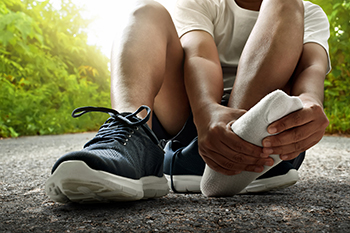
Running enthusiasts often face the challenge of foot and ankle injuries, with plantar fasciitis being a common adversary, constituting approximately 25% of running-related issues. This condition involves inflammation of the thick band of tissue, the plantar fascia, connecting the heel bone to the toes. To mitigate the risk of plantar fasciitis and other foot and ankle injuries, careful consideration of footwear is essential. Choose running shoes with proper arch support and cushioning, as inadequate footwear contributes significantly to plantar fasciitis. Regularly replacing shoes is also needed to maintain their effectiveness. Further, gradual progression in running intensity or distance is vital, as abrupt increases can strain the plantar fascia and lead to injury. Incorporating a pre-run stretching routine targeting the calves, Achilles tendon, and plantar fascia enhances flexibility, reducing the likelihood of injuries. Equally important is a focus on foot strengthening exercises, such as toe curls and resistance band exercises, which contribute to better support and reduce the overall risk of foot and ankle issues. By understanding and addressing these factors, runners can take proactive steps to keep their feet pain-free, ensuring a sustained and enjoyable running experience. If persistent discomfort arises, it is suggested that you schedule an appointment with a podiatrist for personalized guidance on managing plantar fasciitis.
Plantar fasciitis can be very painful and inconvenient. If you are experiencing heel pain or symptoms of plantar fasciitis, contact Shaun J. Limon, DPM and Lisa Griffith-Limon, DPM from Limons Foot & Ankle Care. Our doctors can provide the care you need to keep you pain-free and on your feet.
What Is Plantar Fasciitis?
Plantar fasciitis is the inflammation of the thick band of tissue that runs along the bottom of your foot, known as the plantar fascia, and causes mild to severe heel pain.
What Causes Plantar Fasciitis?
- Excessive running
- Non-supportive shoes
- Overpronation
- Repeated stretching and tearing of the plantar fascia
How Can It Be Treated?
- Conservative measures – anti-inflammatories, ice packs, stretching exercises, physical therapy, orthotic devices
- Shockwave therapy – sound waves are sent to the affected area to facilitate healing and are usually used for chronic cases of plantar fasciitis
- Surgery – usually only used as a last resort when all else fails. The plantar fascia can be surgically detached from the heel
While very treatable, plantar fasciitis is definitely not something that should be ignored. Especially in severe cases, speaking to your doctor right away is highly recommended to avoid complications and severe heel pain. Your podiatrist can work with you to provide the appropriate treatment options tailored to your condition.
If you have any questions please feel free to contact our office located in Lakewood Ranch, FL . We offer the newest diagnostic and treatment technologies for all your foot and ankle needs.
Footcare and Overall Well Being
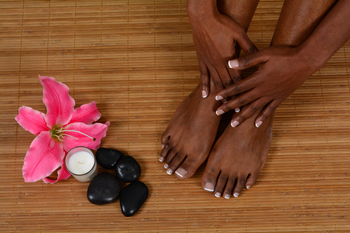
Proper foot care is essential for maintaining mobility and overall quality of life and becomes increasingly important with age. Foot issues can hinder everyday activities, such as walking, shopping, and exercising, leading to impaired mobility and a decreased quality of life. Pain or altered walking due to foot problems heightens the risk of falls, potentially impacting mental well being, social interaction, and increasing the likelihood of depression. In the workplace, foot pain can reduce productivity, affecting self esteem and effectiveness. Moreover, good foot health is vital for maintaining the ability to exercise, which in turn affects general health, weight management, and the risk of diabetes and heart disease. Surgery for foot issues may result in lasting mobility challenges, altering lifestyle and well-being. For those with diabetes, foot care is even more critical as high blood sugar can lead to circulation issues and nerve damage, increasing the risk of hard to treat infections. As part of your journey to improve your overall health and well being, it is suggested that you make an appointment with a podiatrist to have your feet examined, obtain any necessary treatment, and learn about effective foot care.
Everyday foot care is very important to prevent infection and other foot ailments. If you need your feet checked, contact Shaun J. Limon, DPM and Lisa Griffith-Limon, DPM from Limons Foot & Ankle Care. Our doctors can provide the care you need to keep you pain-free and on your feet.
Everyday Foot Care
Often, people take care of their bodies, face and hair more so than they do for their feet. But the feet are a very important aspect of our bodies, and one that we should pay more attention to. Without our feet, we would not be able to perform most daily tasks.
It is best to check your feet regularly to make sure there are no new bruises or cuts that you may not have noticed before. For dry feet, moisturizer can easily be a remedy and can be applied as often as necessary to the affected areas. Wearing shoes that fit well can also help you maintain good foot health, as well as making it easier to walk and do daily activities without the stress or pain of ill-fitting shoes, high heels, or even flip flops. Wearing clean socks with closed shoes is important to ensure that sweat and bacteria do not accumulate within the shoe. Clean socks help to prevent Athlete’s foot, fungi problems, bad odors, and can absorb sweat.
If you have any questions please feel free to contact our office located in Lakewood Ranch, FL . We offer the newest diagnostic and treatment technologies for all your foot and ankle needs.
It's Time for Beautiful Feet
Mobility Challenges for People With Osteoarthritis of the Feet
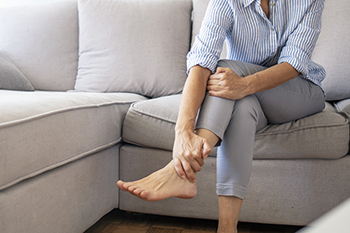
Mobility can be significantly impacted in individuals with osteoarthritis of the feet. Osteoarthritis is a common joint condition characterized by the breakdown of cartilage, which cushions the joints. When it affects the feet, it can lead to several mobility-related challenges. The pain and stiffness associated with osteoarthritis can make it difficult to walk and move comfortably. Simple activities like standing up, walking short distances, or climbing stairs may become painful and challenging. The loss of joint flexibility in the feet can also affect balance, increasing the risk of falls and further hindering mobility. Osteoarthritis can alter the natural alignment of the feet, leading to abnormal walking patterns and gait disturbances. Additionally, individuals with foot osteoarthritis may become less physically active due to discomfort, which can contribute to overall deconditioning and reduced mobility. Managing osteoarthritis of the feet often involves a combination of treatments, including pain management, orthotics, assistive devices, and lifestyle modifications. When severe and more conservative treatments do not work, surgery may be needed as an intervention. If you suffer from osteoarthritis in your feet and movement is hard, it is suggested that you make an appointment with a podiatrist to discuss treatment that may help you to resume pain-free living.
Arthritis can be a difficult condition to live with. If you are seeking treatment, contact Shaun J. Limon, DPM and Lisa Griffith-Limon, DPM from Limons Foot & Ankle Care. Our doctors can provide the care you need to keep you pain-free and on your feet.
Arthritic Foot Care
Arthritis is a term that is commonly used to describe joint pain. The condition itself can occur to anyone of any age, race, or gender, and there are over 100 types of it. Nevertheless, arthritis is more commonly found in women compared to men, and it is also more prevalent in those who are overweight. The causes of arthritis vary depending on which type of arthritis you have. Osteoarthritis for example, is often caused by injury, while rheumatoid arthritis is caused by a misdirected immune system.
Symptoms
- Swelling
- Pain
- Stiffness
- Decreased Range of Motion
Arthritic symptoms range in severity, and they may come and go. Some symptoms stay the same for several years but could potentially get worse with time. Severe cases of arthritis can prevent its sufferers from performing daily activities and make walking difficult.
Risk Factors
- Occupation – Occupations requiring repetitive knee movements have been linked to osteoarthritis
- Obesity – Excess weight can contribute to osteoarthritis development
- Infection – Microbial agents can infect the joints and trigger arthritis
- Joint Injuries – Damage to joints may lead to osteoarthritis
- Age – Risk increases with age
- Gender –Most types are more common in women
- Genetics – Arthritis can be hereditary
If you suspect your arthritis is affecting your feet, it is crucial that you see a podiatrist immediately. Your doctor will be able to address your specific case and help you decide which treatment method is best for you.
If you have any questions, please feel free to contact our office located in Lakewood Ranch, FL . We offer the newest diagnostic and treatment technologies for all your foot care needs.
More...
How to Manage a Child’s Broken Foot
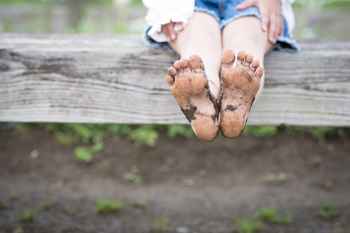
A child’s boundless energy and adventurous spirit can sometimes lead to an accident or injury, such as a broken bone in the feet. For parents, the first step is to recognize the signs and symptoms, such as pain, swelling, bruising, or a change in the shape of your child's foot. Difficulty walking or moving the foot should prompt an immediate visit to a podiatrist. This medically trained foot doctor may use various diagnostic tools to assess the extent of the injury. X-rays, CT scans, and MRIs can reveal broken bones or other potential issues. A bone scan may also be administered for a comprehensive view. The primary goals of treating a child's foot fracture are to promote healing and prevent further injury. Typically, a cast or splint will be applied to immobilize the foot and lower leg, which allows the bones to mend. Pain management and infection prevention may involve medication, and if the skin is broken, a tetanus shot may be necessary. In some cases, depending on the severity of the injury, surgery may be required to realign the bones properly. Wires or screws may be used to maintain stability during the healing process. If your child has symptoms of a broken foot, it is suggested that you consult a podiatrist who can accurately diagnose and treat this condition.
A broken foot requires immediate medical attention and treatment. If you need your feet checked, contact Shaun J. Limon, DPM and Lisa Griffith-Limon, DPM from Limons Foot & Ankle Care. Our doctors can provide the care you need to keep you pain-free and on your feet.
Broken Foot Causes, Symptoms, and Treatment
A broken foot is caused by one of the bones in the foot typically breaking when bended, crushed, or stretched beyond its natural capabilities. Usually the location of the fracture indicates how the break occurred, whether it was through an object, fall, or any other type of injury.
Common Symptoms of Broken Feet:
- Bruising
- Pain
- Redness
- Swelling
- Blue in color
- Numbness
- Cold
- Misshapen
- Cuts
- Deformities
Those that suspect they have a broken foot shoot seek urgent medical attention where a medical professional could diagnose the severity.
Treatment for broken bones varies depending on the cause, severity and location. Some will require the use of splints, casts or crutches while others could even involve surgery to repair the broken bones. Personal care includes the use of ice and keeping the foot stabilized and elevated.
If you have any questions please feel free to contact our office located in Lakewood Ranch, FL . We offer the newest diagnostic and treatment technologies for all your foot and ankle needs.
Heel Pain Can Be Treated!
Toddler Foot Pain

Toddler foot pain can be concerning for parents as little ones may not always be able to express what they are feeling accurately. It can stem from a range of issues, including minor injuries from falls or bumps, which are part of normal childhood activities. Overuse from running and jumping can also lead to pain, especially if toddlers are very active. However, there are also specific conditions to be aware of. Growing pains can be associated with Sever’s disease and are a frequent cause of discomfort in children, usually occurring at night or after a day filled with physical activity. Other potential causes include flat feet as well as in-toeing, where the feet turn inward instead of pointing straight. Wearing ill-fitting shoes can also cause pain or discomfort for toddlers, making proper shoe fitting important. Infections such as hand, foot, and mouth disease can cause painful sores on the feet. Additionally, serious conditions like juvenile arthritis, although rare, can result in foot pain. If your toddler is experiencing persistent foot pain that affects their ability to walk, is associated with swelling or redness, or is accompanied by a fever, it is strongly suggested that you make an appointment with a podiatrist for a proper diagnosis and treatment.
Foot Pain
Foot pain can be extremely painful and debilitating. If you have a foot pain, consult with Shaun J. Limon, DPM and Lisa Griffith-Limon, DPM from Limons Foot & Ankle Care. Our doctors will assess your condition and provide you with quality foot and ankle treatment.
Causes
Foot pain is a very broad condition that could be caused by one or more ailments. The most common include:
- Bunions
- Hammertoes
- Plantar Fasciitis
- Bone Spurs
- Corns
- Tarsal Tunnel Syndrome
- Ingrown Toenails
- Arthritis (such as Gout, Rheumatoid, and Osteoarthritis)
- Flat Feet
- Injury (from stress fractures, broken toe, foot, ankle, Achilles tendon ruptures, and sprains)
- And more
Diagnosis
To figure out the cause of foot pain, podiatrists utilize several different methods. This can range from simple visual inspections and sensation tests to X-rays and MRI scans. Prior medical history, family medical history, and any recent physical traumatic events will all be taken into consideration for a proper diagnosis.
Treatment
Treatment depends upon the cause of the foot pain. Whether it is resting, staying off the foot, or having surgery; podiatrists have a number of treatment options available for foot pain.
If you have any questions, please feel free to contact our office located in Lakewood Ranch, FL . We offer the newest diagnostic and treatment technologies for all your foot care needs.
Preventing Common Workplace Foot Injuries
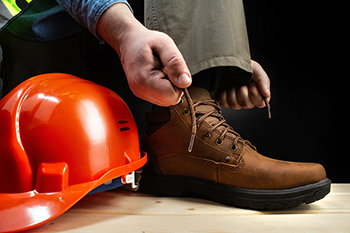
Workplace foot injuries are not only painful but can also lead to lost productivity and reduced quality of life. To avoid such mishaps, consider these essential strategies. First and foremost, wearing proper footwear is key. Invest in sturdy, comfortable shoes or boots designed for your specific work environment. Ensure they fit well and provide ample support. Second, keep your workspace clutter-free. Remove any obstacles or tripping hazards that could lead to slips and falls. Next, practice good housekeeping, ensuring spilled liquids are cleaned promptly. Additionally, stay mindful of the ergonomic design of your workspace, which can reduce the strain on your feet. Last but not least, if your job involves heavy lifting or dangerous machinery, always use the provided safety gear. This can include wearing steel-toed boots and foot guards to protect against falling objects or potential crushing accidents. By staying vigilant and following these guidelines, you can significantly reduce the risk of common foot injuries in the workplace and keep your feet in top condition. If you would like information about appropriate shoes to wear for work, it is suggested that you visit a podiatrist.
While working on the feet, it is important to take the proper care of them. For more information about working on your feet, contact Shaun J. Limon, DPM and Lisa Griffith-Limon, DPM from Limons Foot & Ankle Care. Our doctors will treat your foot and ankle needs.
Working on Your Feet
Standing on your feet for long periods of time can cause stress and pain in your feet. Your whole body may experience change in terms of posture, back pain, bunions, callouses and or plantar warts. There are ways to avoid these conditions with proper foot care, smart choices and correct posture.
Positive Changes
Negative heeled shoe – Choosing this shoe type places the heel slightly lower than the ball of the foot. These are great for overall foot health. Find shoes that fit you correctly.
Go barefoot – Our feet were not designed to be enclosed for all hours of the day. Try to periodically expose your feet to air.
Eliminate Pain
Foot Exercises – Performing simple exercises, incorporating yoga and doing stretches are beneficial. This will allow increased blood flow to the area and muscles of the foot.
Achilles tendon – Stretching the foot out flat on the floor will relax the calf muscles and tendon. These exercises can be performed almost anywhere. Make sure you add these exercises to your daily regimen.
With a little bit of this information and knowing more about foot health, you will notice changes. Foot stretches and proper footwear will help with pain and prevent further issues.
If you have any questions please feel free to contact our office located in Lakewood Ranch, FL . We offer the newest diagnostic and treatment technologies for all your foot and ankle needs.




